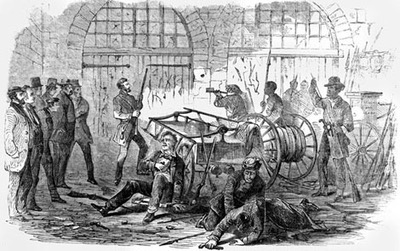

The Trial of John Brown, Radical Abolitionist by James Tackachīeck explores how Brown’s supporters affected his portrayal in history.John Brown's raid at Harpers Ferry in October 1859 has long been regarded as one of the pivotal events in the coming of the Civil War, but both the nature of the attack and its impact on American society were more complicated than most people or some textbooks acknowledge. Learn more about Brown and his raid by exploring these resources.įiery Vision: The Life and Death of John Brown by Clinton Cox Historians have long debated and continue to debate whether John Brown was a hero, a villain, or both. His body was sent back to North Elba, New York, where he was buried. Then Brown climbed the gallows and was hanged. I had, as I now think, vainly flattered myself that without very much bloodshed, it might be done.” “I, John Brown am quite certain that the crimes of this guilty land will never be purged away but with Blood. He handed a note to one of the guards which read: On December 2, Brown left the prison and traveled to the gallows by wagon, while sitting on his coffin. On October 31, after 45 minutes of deliberation, the jury handed down a guilty verdict, and Brown was sentenced to death by hanging on November 2. Brown and four others were arrested.īrown was arraigned on October 25, and his trial began on October 27 in Charles Town, Virginia (now West Virginia). Ten of Brown’s men were killed or critically wounded, and seven men escaped (although three runaways were later captured). When Brown refused, the attack on the fire engine house began. Stuart to order Brown’s unconditional surrender. Then early the following morning, the United States Marines, under the command of Colonel Robert E.

Firing continued throughout the day as more militia units arrived. The next morning, Virginia Militia units arrived and pushed Brown, his men, and the hostages back to a small fire engine house. Interior of the engine house during John Brown's raid, opens a new window by Frank Leslie's illustrated newspaper, v. The conductor informed the authorities at other stops. The train was held for several hours and then was permitted to proceed.
Raid of harpers ferry timelime free#
When a free African-American baggage handler, Heyward Shepherd, went to investigate, he was shot and killed by Brown’s men. In addition, a train traveling from Wheeling, Virginia (now West Virginia) to Baltimore was detained. He survived, fled the scene, and warned the town about the armed men. The night watchman’s relief arrived and was shot at by Brown’s men. Word of the raid leaked out to the town and the surrounding areas. Then they waited for the slaves that Brown expected to join their cause. He sent several men to take the prominent townsmen hostage, including Colonel Lewis Washington, son of George Washington's grand-nephew.

First Brown took control of the federal armory, which was guarded by only one night watchman, before proceeding to take control of Hall’s Rifle Works and then returning to the armory to establish a command post. They cut the telegraph lines so that no warnings could be sent out, and several of Brown’s men were sent to guard the bridge over the Shenandoah River.

On the night of October 16, 1859, Brown and his men entered the town from Maryland, crossing over the Potomac River bridge. This would start a slave rebellion throughout the south. Brown’s plan was simple: he and his men would march into Harpers Ferry, take control of the federal armory there, and arm the slaves that would come to him. John Brown is probably best known for his assault on the town of Harpers Ferry, Virginia (now West Virginia). Brown left Kansas months later, fearing that he would be arrested for murder. In May of 1856, Brown, along with several other men, attacked pro-slavery settlers along the Pottawatomie Creek in Kansas. This act caused great tensions in the territories from both pro-slavery and anti-slavery settlers, which led to acts of violence on both sides. These beliefs influenced his actions throughout his life.īrown spent years fighting for the abolition of slavery, including his fights against the Kansas Nebraska Act, which allowed settlers in those two territories to decide whether they would enter the Union as a free state or a slave state. 1856, opens a new window by John Bowles, Photographer / Public DomainBy Kara Rockwellīorn in 1800 to an abolitionist couple, John Brown was raised to believe that slavery was a sin and an insult to God.


 0 kommentar(er)
0 kommentar(er)
